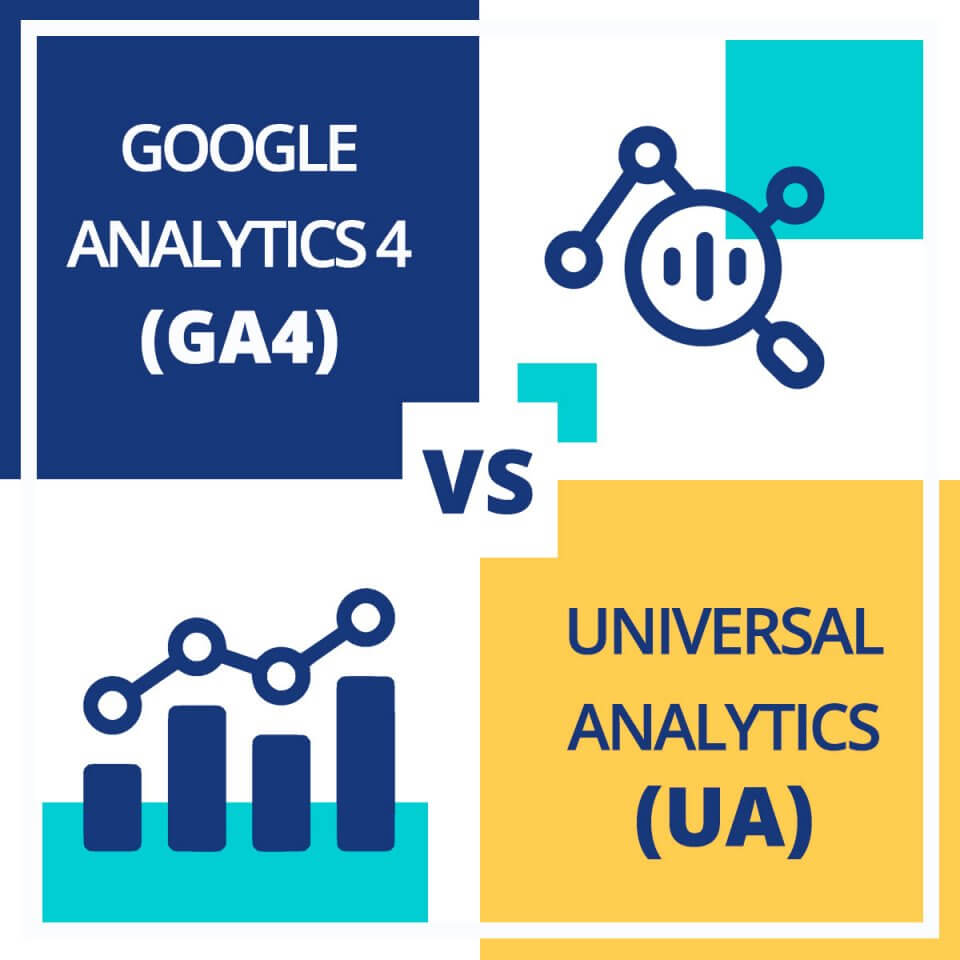What changes with Google Analytics 4

After a year of repeated warnings by Google, the big date is approaching!
On July 1st, 2023, Universal Analytics will stop recording new data, forcing all those who are in charge of websites to migrate to Google Analytics 4. Otherwise, they will no longer see their visits, interactions or conversion data being recorded!
This change comes with the promise of better user privacy controls, with GA4 (Google Analytics 4) being developed in line with data protection regulations and giving users the ability to better control what is tracked and how that data is used.
It all sounds great, but what is certain is that a lot will change with GA4, and both intelligence professionals and marketing or ecommerce teams will have to get used to a new tool, after years of using and adapting to the defunct Google Universal Analytics (UA).
But what are, after all, the main differences in the way metrics are accounted for, and the new ways of measuring that have emerged in this evolution from UA to GA4?
1 / Users
While the UA shows us the total number of users by default, in GA4 we are shown the data of active users only. This new metric encompasses any user who has had a session with interaction.
2 / Attribution Models and Assisted Conversions
In UA, the attribution model defined by default is that of the last non-direct click, and this cannot be changed. In GA4, on the other hand, the attribution model is the data-based attribution model, and in this model, credit for conversion is distributed based on the data of each conversion event. In other words, although assisted conversions continue to exist (with their own report in GA4), they only make sense if there are changes in the attribution models.
3 / Conversion Counting
In the UA only 1 conversion per session is counted. Now let’s imagine that the conversion is the submission of a form. If there are 2 form submissions in the same session, in UA only 1 conversion will be counted, while in GA4 2 will be counted. Makes more sense, doesn’t it?
4 / Bounce Rate vs. Interaction Rate
While in the UA the bounce rate corresponds to the percentage of unique page sessions in which there was no interaction, in GA4 we give more importance to the inverse: the interaction rate. That is, the percentage of sessions that were sessions with interaction.
5 / Interactions and Interaction Rate
These are two of the new star metrics of GA4, to which we should be more attentive! An interaction is recorded when a user has a session that lasts longer than 10 seconds, activating a conversion event or when they have more than 2 page-views. If a user browses your homepage for less than 10 seconds and then leaves without activating any events or visiting any other pages or screens, the session will then be counted as a rejection (a session with a rejection but not a session with interaction).
6 / All interactions are events
In GA4, unlike UA, all interactions are recorded as events, so we do not have the traditional elements of category, action, or label available. In other words, when a user views a page, the page-view event is automatically activated. Much simpler!
Basically, this is all good news.
The important thing is for the tool to stabilize in the coming months, while gathering more and more users.
Around here we are ready for the 1st of July 2023 😉
Read also:
A handful of reasons to use and abuse of Motion Graphics
Mind Forward Wins Clutch 2022 Award for Portugal’s Leading Digital Strategy Agency
